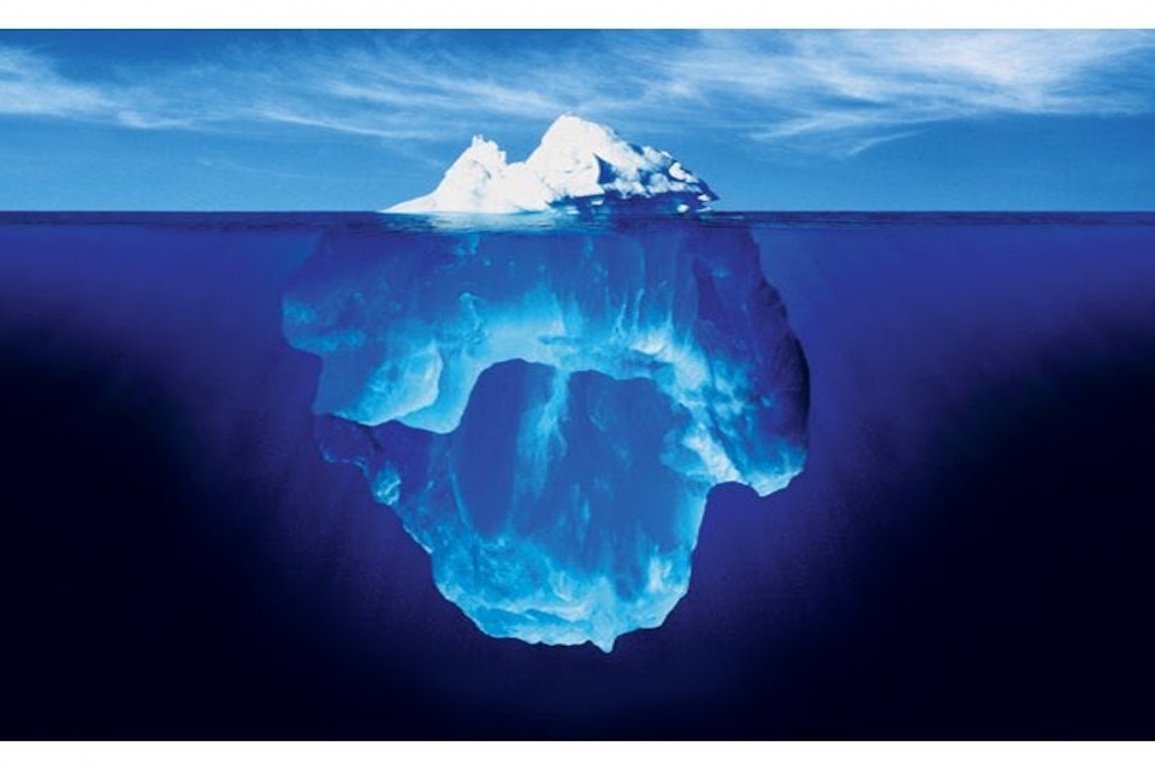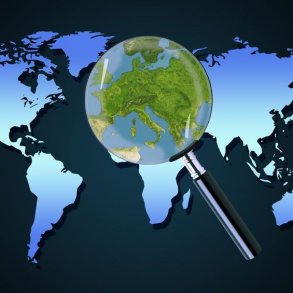By Giles Hutchins for Enlivening Edge Magazine
In Embodying Teal for Real – Part 1, we explored the importance of love rather than fear underpinning our thoughts, words, and deeds, and also identified the importance of 1) self-awareness and 2) self-inquiry, as we take small steps of love on our journey of embodying Teal. In this article we will take a deeper look at self-awareness and self-inquiry, and describe how these practices of embodying Teal are especially suited for leaders developing from Green to Teal-consciousness.
The quality of ‘beingness’ resulting from the practices below is not new; it’s as fresh as it is ancient. Just as the ancient Greeks and Egyptians had the words ‘Know Thy Self’ over the doorways of their temples, so we find that embodying self-awareness and self-inquiry is the life-blood of today’s Teal organisations.
The reality of our human condition is that in a fast-paced working environment, we react to situations with well-trodden habit-paths. The more our behaviours are ingrained, the more difficult they are to acknowledge and transform. While these well-trodden behavioural paths might give a certain security and consistency in our persona, they can undermine our personal development. They can also undermine our relations, as our defensiveness, judgemental perspective, impatience, and reactivity actually undermine the potential for synergy that could result from relational tensions in our day-to-day life.
Hence, personal development is intimately entwined with organisational and societal development. And, to a large extent, our context influences and affects our own ‘beingness’. For instance, having just returned from a week of non-stop travel, including flights, airport hotels, speaking at conferences, running workshops and sleeping badly in stuffy and noisy hotel rooms, it is easy to revert to well-trodden habits or reactive behaviours of frustration at train delays or long queues. So the ‘small steps with great love’ become more challenging, as beingness becomes more uncentered.
Hence, the first step in mastery is ‘self-awareness’
This means that actually taking notice of when we are getting frustrated, impatient, tense, reactive, distracted, or overly-excited is the all-important first step. We take notice, pause, sense into these feelings arising, and observe them.
Without this first step of noticing the feeling emerging, we are but lost in the reaction—trapped, enslaved by our own personas. Our reactions manifest in our outer behaviour or we merely suppress these reactions while providing an artificial façade of acceptability. As a result, the situation unfolds in a manner that is no longer coming from love, but rather from control, fear, frustration, impatience, or inauthenticity, and some variant of passive/aggressive emotional reactivity. This reaction pollutes our environment in varying degrees, rather than enhancing it; we dance out-of-tune with life. Synchronistic pathways dissipate; we grasp and grab rather than flow-into and participate-with. We become life-denying rather than life-affirming.
Yet, this slip-up is learning in itself, if we have the self-awareness to notice our reaction and the effect it has on our environment. Perhaps we might pause and reflect, sensing into what happened and the feelings that welled up. This can provide the insight for real transformative learning to take place.
In this regard, each day and each tension provides our learning forum for embodying Teal.
To summarise, self-awareness is a vital tool; we cultivate this tool by regularly sensing into how we are feeling in our body, and gaining insight—rather than judgment—on the feelings. We notice and sense into any feelings of tiredness, distraction, aggravation, fear, impatience, judgment, frustration, or anger, within our body.
The more we’re able to sense coming from a place of loving responsiveness, the more we can learn to notice the difference from when we are being reactive rather than responsive. The more we practice sensing into the body, the more our self-awareness enhances.
A tip here is not to try to suppress feelings of impatience, constriction or frustration, but rather open up awareness into them, noticing and embracing them, like a friend. This way, the feeling will not subsume us into the reactive behaviour it provokes (no matter how mild it seems on the outside, e.g. interrupting someone hastily, or projecting our own fears or needs for acceptance on to the other person, snapping at someone with a barbed comment, positioning ourselves with an egotistical edge, etc.).
Loving self-awareness shows the way we get trapped by our fears, desires, ego-whims, and angers, then we are able to make conscious steps to learn and develop.
Then comes the second step – ‘self-inquiry’
Cultivating self-awareness by learning to pause, sense-in, feel, and reflect throughout the daily busyness, we start to notice our habitual reactions, and our patterns of conditioned behaviours.
Some of these will have been cultivated through past experience of life, perhaps for good reason to start with, for example, to defend and stabilise us during harrowing times at school or at home as a child, or as we embarked on our first career steps. All of these habitual reactions will contain a blend of fear and love within them, for example, a fear of being alienated or thought of as ‘a loser’ is blended with a need to be loved and accepted.
Spending time at the end of each day—say ten minutes in bed before sleep, or ten minutes on the journey back from work—we can start to get used to self-inquiring into difficult interactions and tense moments that arose
The more relaxing and natural the space for this self-inquiry the better, as then we can be more gentle, nurturing, and open with ourselves, as we inquire deeply into the feelings of the day and what lies beneath these reactions. Nature has been proven to relax body and mind, enhance inter-hemispheric brain integration as well as head-heart-gut coherence, so a walk in Nature can aid reflecting and self-inquiring.
Remember, this is about love: learning to love ourselves, foibles and all. As we inquire, it’s best to hold an attitude of gentleness and openness as we sense into the tensions, emotions, and trials we have experienced.
In this way, we learn to become gentle and open not just with ourselves but also in how we perceive others and their challenges. We recognise that we all are struggling with fears, concerns, and frustrations, each in our own way, whether consciously or unconsciously. We are all learning to love.
This practice of reviewing the day just gone is in-and-of-itself very powerful. It helps us practice self-awareness. While we are scanning through the day’s events from morning to evening, we might sense in our body when certain relational exchanges and situations create constrictions and emotions.
We can then inquire into the feeling, what is triggering it, and sense when we are seeking to judge or blame the other or the outer situation and then sense deeper into the feeling beyond blame with loving insight. Here in this deeper self-inquiry are golden nuggets that provide insight about our own learning, about our habituations, and deep-seated fears. Within our base-emotions, we can reveal gold, to help cultivate compassion and wisdom.
Self-awareness and self-inquiry enable greater self-agency and responsibility, enhanced relational authenticity, and deeper embodiment of life-affirming service and purpose. This transforms ourselves, our relationships, our team dynamics, our organisations, and the world; it is this that our humanity needs now more than ever.
How does this love-based beingness help Green-stage leaders and organisations reach beyond into Teal?
At the organisational and personal levels, within the Spiral Dynamics framework Green is characterised by empowering self and others through ways of relating, and a widening of perceptual horizon from the narrow Orange focus on specific goals such as task-outputs, profit and shareholder value. This comes with an increasing recognition of the value and impact our activities and relationships have not just within our immediate sphere but also through the wider eco-system of inter-relations (human and more-than-human). Cultivating a more empowering, equalitarian, and stakeholder-value-based culture is central to Green, moving beyond the narrow goal-oriented focus of Orange.
Teal moves beyond Green by recognising the importance of the individual’s self-realisation (or ‘individuation’ to use Carl Jung’s phrase).
Wholeness of the individual and the community through more soulful, purposeful, compassionate, and wise relations with self-other-world is all-important here. Hence, a connection with soul or ‘higher Self’ comes hand-in-hand with the ‘taming of the ego’, along with a strong resonance between the individual’s purpose and the organisation’s purpose. This allows for a coherence within the organisation’s living-field to cultivate so that the burdensome hierarchic structures, rules, and values charters of the Green stage can be let-go of.
A more soulful wisdom emerges in Teal-consciousness, within individuals and through their relationships. People can viscerally sense when an interaction is out-of-kilter. This dissonance is not then ‘judged’, but seen as an opportunity to learn, to take responsibility for our own learning journey while also contributing to collective learning. We sense into the synchronicities as we learn to follow the flow of life, the ‘Way of the Tao’.
The metaphor for the Green organisation is ‘family’, and the metaphor for the Teal organisation is ‘living system’. A key characteristic of the living organisation is ‘emergence’. Emergence spawns from the ‘divergence’ of empowering self-organising ways of working balanced with the ‘convergence’ of an evolutionary sense of purpose that seeks to serve life. What enables this to work in practice is a spirit of love, openness, authenticity, and wisdom. Through love, our very being transforms the world around us. It is here that the living organisation becomes regenerative; it tends towards harmony with Life.
It is in this shift from Tier One consciousness (including Orange and Green) into Tier Two consciousness of Teal, that we open up more deeply to our true nature as human beings within an innately interconnected more-than-human world. Whereupon we realise that
‘What is within us is within everything. Once we understand this truth, we step outside of the parameters of our individual self and come to realise the power that is within us. This shift in awareness is a very simple step that has profound consequences’ ~Llewellyn Vaughan-Lee, mystic
Part Three of this series on Embodying Teal for Real will explore some tips to help us walk this path of love.
Giles Hutchins is a thought-leader and adviser on the future of business. His latest book, Future Fit, can be found on Amazon; see a short video about it here. He blogs at www.thenatureofbusiness.org and is Chairman of The Future Fit Leadership Academy
is a thought-leader and adviser on the future of business. His latest book, Future Fit, can be found on Amazon; see a short video about it here. He blogs at www.thenatureofbusiness.org and is Chairman of The Future Fit Leadership Academy





Thank you, Giles. My whole being relaxed after reading this, as if I’d been to a spa.